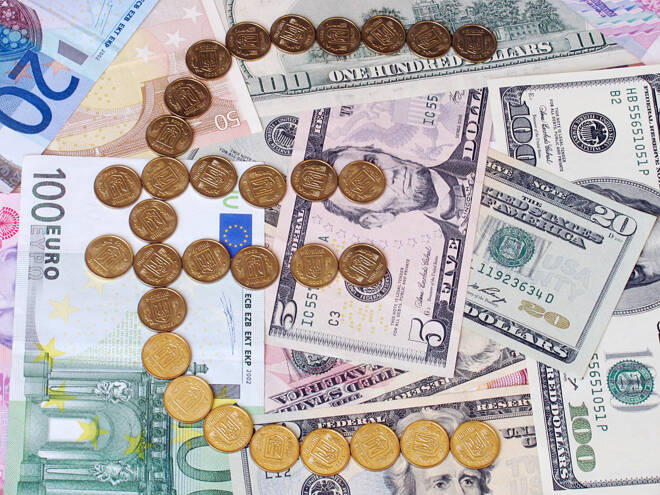Advertisement
Advertisement
Inflation Figures and Trade Data from the Eurozone Deliver Mixed Results for the EUR
By:
While inflation figures provided EUR support, trade data for the Eurozone failed to impress, leading to a pullback from current day highs...
It was a busier morning on the economic calendar, with finalized inflation figures for France, Germany, and Italy in focus. Trade data from the Eurozone was the key stat of the day, however.
Eurozone Trade
In April, the Eurozone’s trade surplus narrowed from €15.8bn to €10.9bn. Economists had forecast a narrowing to €14.4bn.
According to Eurostat,
- Exports to the rest of the world was up 43.2% to €135.3bn in April when compared with April 2020.
- Imports from the rest of the world increased 37.4%, year-on-year, to €133.0bn.
- In April 2020, the trade surplus had stood at €2.3bn.
- Intra-euro area trade rose to €178.9bn in April 2021, up by 61.9% compared with April 2020.
Inflation
In May, German consumer prices increased by 0.5%, which was in line with forecasts. German consumer prices had risen by 0.7% in April.
From France, consumer prices increased by 0.3% in May, which was also in line with forecasts. In April, consumer prices had risen by 0.1%.
In Italy, consumer prices stalled in May after having risen by 0.4% in April. This was also in line with forecasts.
While the numbers were mixed for the month of May, all three member states reported in a pickup in the annual rate of inflation.
Germany’s annual rate of inflation accelerated from 2.0% to 2.5%, with France’s ticking up from 1.2% to 1.4%.
In spite of consumer prices stalling in May, Italy’s annual rate of inflation picked up from 1.1% to 1.3%.
Market Impact
Ahead of the trade data, the EUR had fallen to a pre-stat and current day low $1.21139 before rising to a pre-stat high $1.21281.
In response to the inflation and trade data, the EUR rose to a post-stat and current day high $1.21474 before falling back to a post-stat low $1.21208.
At the time of writing, the EUR was up by just 0.01% to $1.21225.
Next Up
Retail sales, wholesale inflation, industrial production, and manufacturing numbers from the U.S. Expect the retail sales figures to be key…
About the Author
Bob Masonauthor
With over 28 years of experience in the financial industry, Bob has worked with various global rating agencies and multinational banks. Currently he is covering currencies, commodities, alternative asset classes and global equities, focusing mostly on European and Asian markets.
Advertisement
